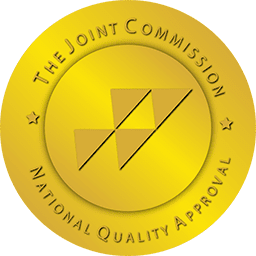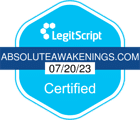- Home
- Treatment
Treatment Designed for You.
Get in touch with Absolute Awakenings today and begin your journey to long-term healing & recovery. - What We Treat
An Experience in Healing
Get in touch with Absolute Awakenings today and begin your journey to long-term healing & recovery. - About
The Rehab You've Been Looking For
Get in touch with Absolute Awakenings today and begin your journey to long-term healing & recovery. - Tour
- Resources
Don't Wait Another Day.
Get in touch with Absolute Awakenings today and begin your journey to long-term healing & recovery. - Admissions
The Rehab You've Been Looking For
Get in touch with Absolute Awakenings today and begin your journey to long-term healing & recovery. - Contact
(866) 627-0196
3000 NJ-10, Morris Plains, NJ 07950
admissions@absoluteawakenings.com
Schedule a Tour Now
Get in touch with Absolute Awakenings today and begin your journey to long-term healing & recovery.
Begin Your Journey Now
Begin Your Journey Now
- Home
- Treatment
Treatment Designed for You.
Get in touch with Absolute Awakenings today and begin your journey to long-term healing & recovery. - What We Treat
An Experience in Healing
Get in touch with Absolute Awakenings today and begin your journey to long-term healing & recovery. - About
The Rehab You've Been Looking For
Get in touch with Absolute Awakenings today and begin your journey to long-term healing & recovery. - Tour
- Resources
Don't Wait Another Day.
Get in touch with Absolute Awakenings today and begin your journey to long-term healing & recovery. - Admissions
The Rehab You've Been Looking For
Get in touch with Absolute Awakenings today and begin your journey to long-term healing & recovery. - Contact
(866) 627-0196
3000 NJ-10, Morris Plains, NJ 07950
admissions@absoluteawakenings.com
Schedule a Tour Now
Get in touch with Absolute Awakenings today and begin your journey to long-term healing & recovery.
New Jersey Alcohol Rehab
Alcoholism: Signs, Symptoms & Causes
- Written By: Amanda Stevens, B.S.
- Reviewed By: Dr. Po-Chang Hsu, M.D., M.S.
- Updated:
- Published:
- Reading Time: 9 minutes
Find out why Absolute Awakenings is one of New Jersey’s best alcohol rehab programs right now.
Quit Drinking & Get sober
Sobriety Awaits...
Table of Contents
Alcohol use disorder, commonly called alcoholism, can ruin the lives of everyone it affects. And dealing with alcohol use disorder is no easy task, both for the person experiencing the disorder and their family and loved ones. While only a licensed clinician can diagnose alcohol use disorder, the information below will introduce this disorder, its characteristics, and your options for treatment at Absolute Awakenings top-rated alcohol rehab program in NJ.
Key Points
- Alcoholism is an outdated, non-clinical term for alcohol use disorder (AUD).
- AUD is a pattern of alcohol use that can’t be controlled.
- There are different subcategories of AUD ranging from mild to severe.
- AUD comes with many adverse effects, including health effects and related complications like violence and car accidents.
- Though incurable, AUD can be treated effectively.
Addictions We Treat at AATC
What We Treat
understanding alcohol abuse
What is Alcohol Abuse?
In the past, when someone had a problem with alcohol use, they were referred to as an “alcoholic.” Clinicians now refer to alcoholism – a term used for the most severe form of alcohol abuse – as an alcohol use disorder (AUD).
Alcoholism, now known as AUD, is a condition that involves a pattern of alcohol use that can’t be controlled.[1] As a term, alcoholism isn’t clearly defined and isn’t recognized as a diagnosis. AUD and alcohol dependence are more precise terms to describe different levels of unhealthy alcohol use.
Alcoholism is a pattern of alcohol with symptoms similar to substance use disorder. People with AUD may have problems controlling their alcohol use or may continue to use alcohol despite problems at home, work, or school. They also develop a tolerance to alcohol and require more to get the same effects.
According to the National Institute on Alcohol Abuse and Alcoholism (NIAAA), AUD is “an impaired ability to stop or control alcohol use despite adverse social, occupational, or health consequences.”[2]
The DSM-5 integrates two distinct disorders from the DSM-IV, alcohol abuse and alcohol dependence, under the umbrella of AUD with mild, moderate, and severe sub-classifications.[3]
Alcohol Abuse: Signs, Diagnosis & Effects
Generally, alcohol abuse is a drinking pattern that has major and recurrent adverse effects, such as serious problems at school, work, or with family. People who abuse alcohol may also encounter legal problems related to drinking, such as repeated DUIs.
People with alcohol dependence have little to no control over their alcohol use. They display an increased tolerance and withdrawal symptoms if they stop drinking, and they’re often unable to stop once they start.
AUD can be mild, moderate, or severe, based on the diagnostic criteria, but the symptoms may include:
- Being unable to moderate alcohol use
- Attempting to control alcohol use unsuccessfully
- Feeling strong cravings for alcohol
- Failing responsibilities due to alcohol use
- Continuing to use alcohol despite problems with health, interpersonal relationships, work, school, or the law
- Spending a lot of time thinking about, using, and recovering from alcohol
- Giving up on hobbies and other activities to pursue alcohol use
- Using alcohol in hazardous situations like driving
- Experiencing withdrawal symptoms like nausea, sweating, and shaking after the effects of alcohol wear off
For AUD to be diagnosed, you must meet the criteria in the DSM-5. At least three of the following need to be present over 12 months:
- Alcohol tolerance, though as the liver becomes damaged from repeated alcohol use, tolerance can decrease.
- Withdrawal symptoms, such as tremors, nausea, or insomnia. In some cases, the person may drink more to alleviate these symptoms.
- Beyond intentions, which is when a person drinks more alcohol than they intend
- Unsuccessful attempts to stop or reduce alcohol use.
- The time spent consumed, if a person spends a lot of time obtaining, using, or recovering from alcohol consumption.
- Social withdrawal, or when a person withdraws from social or work activities.
- Persistence with alcohol use, despite physical or psychological harm.
In the short term, alcohol can undermine judgment and lead to potentially dangerous decisions and reckless behavior.
Excessive, prolonged alcohol use can lead to serious mental and physical effects, such as:
- Fatigue
- Memory loss
- Weak eye muscles and eye control
- Heart problems, such as heart failure, stroke, and cardiomyopathy
- Hypertension, or high blood pressure
- Diabetes, including potential complications with hypoglycemia while consuming alcohol as a diabetic
- Erectile dysfunction
- Fetal alcohol syndrome, if alcohol is consumed during pregnancy
- Menstrual problems
- Bone loss and an increased risk of fractures
- Nervous system problems, such as neuropathy and dementia
- Cancer, particularly of the mouth, esophagus, colon, liver, rectum, breast, pharynx, and prostate
- Liver diseases like hepatitis and cirrhosis
- Gastrointestinal conditions like gastritis or pancreatic damage, which can affect the body’s ability to digest food and obtain nutrients
the different types of alcoholic drinking
The Dangerous Cycle of Alcohol Abuse
For people with AUD, the cycle of alcohol use includes periods of being intoxicated (drunk) followed by periods of withdrawal.
Alcohol intoxication happens when the amount of alcohol in the bloodstream increases. The higher the concentration, the more likely you are to experience drunkenness or other ill effects. Intoxicated people may display slurred speech, poor judgment, unstable moods, problems with memory or focus, poor coordination, and inappropriate behavior.
If the intoxication is severe, you may experience blackouts, or periods you can’t remember the events. Once blood alcohol concentration reaches excessively high levels, it can lead to coma, permanent brain damage, or death.
Alcohol withdrawal follows intoxication and can occur within several hours to several days later. The symptoms may include hand tremors, rapid heartbeat, sweating, insomnia, nausea, vomiting, hallucinations, restlessness, and anxiety. Seizures may occur in severe cases.
Because there’s some overlap between a hangover – the ill feeling people may have after drinking – and withdrawal, it’s assumed that a hangover is withdrawal. However, hangovers can occur after a single time using alcohol, whereas withdrawal occurs after multiple times using alcohol.
Unhealthy Alcohol Use
Unhealthy alcohol use may include any alcohol use that puts someone’s health or safety at risk. This may include binge drinking, a normalized behavior among young people that carries significant health and safety risks.[4]
Among men, five or more drinks within two hours is considered binge drinking. For women, four drinks within two hours is considered binge drinking. While usually not considered a “problem,” since people who binge drink don’t necessarily have dependence on alcohol, it’s harmful on its own.
Binge drinking is most common among younger adults aged 18 to 34. Though it’s just one pattern of drinking, it accounts for nearly all excessive drinking. Over 90% of US adults who drink excessively report binge drinking.
There are many risks associated with binge drinking, including:
- Unintentional injuries from car accidents, serious falls, and alcohol poisoning
- Sexually transmitted diseases
- Unintended pregnancy and poor outcomes like miscarriage
- Violence, such as homicide, suicide, domestic violence, and sexual assault
- Sudden infant death syndrome
- Certain cancers
- Memory and learning problems
- Chronic illnesses like stroke, heart disease, and liver disease
According to the 2020-2025 Dietary Guidelines for Americans, adults of legal drinking age can drink “in moderation” by limiting intake to two drinks or less in a day for men or one drink or less in a day for women.[5]
What is considered “one drink?” According to the NIAAA, one standard drink is:
- 12 ounces of regular beer with about 5% alcohol
- 8 to 9 ounces of malt liquor with about 7% alcohol
- 5 ounces of wine with about 12% alcohol
- 1.5 ounces of hard liquor with about 40% alcohol
We Accept With Most Major Insurance
If you or a loved one is ready to get help but finances are holding you back, give us a call. We can work with your health insurance provider.














How to find the right alcohol rehab near you
Finding the Right Alcohol Treatment Center in New Jersey
There’s no one-size-fits-all treatment for alcohol addiction. Though treatment for alcoholism may immediately conjure thoughts of 12-step programs or a 28-day hospitalization, there are a variety of effective treatment options for varying degrees of AUD.
AUD may be treated with a combination of behavioral treatments, such as cognitive behavioral therapy (CBT), support groups like Alcoholics Anonymous (AA) and 12-step programs, and traditional approaches like psychotherapy.
With severe cases of AUD, a medically supervised detox or medication support can be used to help with the recovery process. Some of these medications include disulfiram, which blocks the breakdown of alcohol in the body and causes unpleasant symptoms like nausea.
“Alcoholism” may have fallen out of favor as a term, but AUD is still a prevalent issue with wide-reaching physical, mental, and societal effects. For many struggling with AUD, denial is a common response because of how common alcohol use is. But if you or a loved one have a problem, it’s crucial to seek help before it becomes severe and life-threatening.
Stories of Hope & Healing
Hear from Our Alumni
A jewel among many local drug and alcohol rehab treatment centers in Denville, New Jersey, the care and treatment options you’ll receive at Absolute Awakenings is second to none. From not knowing if you’ll ever feel in control again to being confident in the path you’re on, we are invested in YOU every step of the way.
Begin Your Journey to Long-Term Healing
Make the Call. Change Your Life.
Yes, You Can Get Your Life Back...
With our trained and compassionate professionals in your corner, freedom can be yours. All it takes is you choose yourself. Choosing a better tomorrow.
experience sobriety at our NJ alcohol treatment center
Absolute Awakenings is Your Best Choice for an Alcohol Rehab in New Jersey
Experience Lasting Recovery
At Absolute Awakenings, we understand that the journey to recovery from alcohol addiction is both profoundly personal and challenging. Our alcohol rehab program, located in the heart of New Jersey, is designed to offer not just a path to sobriety, but a transformation into wellness and renewal. If you or a loved one is struggling with alcohol dependence, know that you’re not alone, and more importantly, hope and help are closer than you think.
Make today the day you choose transformation. Take the first step towards reclaiming your life by reaching out to Absolute Awakenings. Whether you’re seeking help for the first time or looking to renew your commitment to sobriety, we’re here to support you through every phase of your recovery journey.
Contact us to learn more about our program, speak with a compassionate advisor, or schedule a visit.
At Absolute Awakenings, we don’t just treat addiction; we help you awaken to a new possibility—a life filled with freedom, hope, and joy.
- U.S. Department of Health and Human Services. (n.d.). Understanding alcohol use disorder. National Institute on Alcohol Abuse and Alcoholism. Retrieved from https://www.niaaa.nih.gov/publications/brochures-and-fact-sheets/understanding-alcohol-use-disorder on May 2, 2023.
- U.S. Department of Health and Human Services. (n.d.). Understanding alcohol use disorder. National Institute on Alcohol Abuse and Alcoholism. Retrieved from https://www.niaaa.nih.gov/publications/brochures-and-fact-sheets/understanding-alcohol-use-disorder on May 2, 2023.
- U.S. Department of Health and Human Services. (n.d.). Alcohol use disorder: A comparison between DSM–IV and DSM–5. National Institute on Alcohol Abuse and Alcoholism. Retrieved from https://www.niaaa.nih.gov/publications/brochures-and-fact-sheets/alcohol-use-disorder-comparison-between-dsm on May 2, 2023.
- Centers for Disease Control and Prevention. (2022, November 14). Binge drinking. Centers for Disease Control and Prevention. Retrieved from https://www.cdc.gov/alcohol/fact-sheets/binge-drinking.htm on May 2, 2023.
- Centers for Disease Control and Prevention. (2022, April 19). Facts about moderate drinking. Centers for Disease Control and Prevention. Retrieved from https://www.cdc.gov/alcohol/fact-sheets/moderate-drinking.htm#:~:text=To%20 reduce%20the%20risk%20 of,days%20when%20 alcohol%20is%20 consumed on May 2, 2023.
Answers to Common Questions About Alcohol Abuse
Alcoholism FAQs
Alcohol poisoning occurs when you ingest too much alcohol too quickly, such as with binge drinking. This impairs the brain’s ability to control vital functions like breathing, heart rate, and body temperature, leading to death.
AUD is subcategorized into mild, moderate, and severe AUD, each with its own symptoms and possible side effects.
There are currently over 3 million US cases of AUD each year, based on data from the Mayo Clinic.
No, AUD cannot be cured, but treatment can help people with AUD recover and overcome the disorder.
© Copyright 2024. All Rights Reserved. AATC.
- Terms & Conditions
- Privacy Policy



